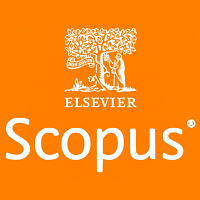
This article is an open access article distributed under the terms and conditions of the Creative Commons Attribution license (CC BY).
ORIGINAL RESEARCH
Individual features of the masticatory muscle bioelectrical activity in organization of chewing function
1 Pirogov Russian National Research Medical University (Pirogov University), Moscow, Russia
2 Institute of Higher Nervous Activity and Neurophysiology of the Russian Academy of Sciences, Moscow, Russia
Correspondence should be addressed: Olga Yu. Guseva
Ostrovityanova, 1, 117513, Moscow, Russia; ur.kb@avesug-o
Acknowledgements: we would like to thank Professor I.V. Pogabalo for advice on the methods to record and analyze electromyography data.
Author contribution: Shishelova AYu — study idea, concept and design, data acquisition and processing, statistical data processing, manuscript writing and editing; Guseva OYu — study concept and design, data acquisition and processing, literature review, manuscript writing and editing; Kopetskiy IS — manuscript editing and approval before publishing; Ansari V — data acquisition, literature review.
Compliance with ethical standards: the study was approved by the Ethics Committee of the Pirogov Russian National Research Medical University (protocol No. 250 dated 21 April 2025).
- Alyavija O, Nishanova A, Gulyamova S. Funkcional'naja sistema, obespechivajushhaja processy pishhevarenija v rotovoj polosti. Stomatologija. 2018; 1 (70): 54–57. Russian.
- Gerstner G, Madhavan S and Crane E. Mammalian Oral Rhythms and Motor Control. Biomechanics in Applications. InTech. 2011. Available from: http://dx.doi.org/10.5772/19501.
- Piancino MG, Isola G, Cannavale R, Cutroneo G, Vermiglio G, Bracco P, Anastasi GP. From periodontal mechanoreceptors to chewing motor control: A systematic review. Arch Oral Biol. 2017; 78: 109–121. DOI: 10.1016/j.archoralbio.2017.02.010.
- van der Glas HW, van der Bilt A, Abbink JH, Mason AG, Cadden SW. Functional roles of oral reflexes in chewing and biting: Phase-, task- and site-dependent reflex sensitivity. Arch Oral Biol. 2007; 52 (4): 365– 369. Available from: https://doi.org/10.1016/j.archoralbio.2006.10.022.
- Nordstrom MA. Insights into the bilateral cortical control of human masticatory muscles revealed by transcranial magnetic stimulation. Arch Oral Biol. 2007; 52 (4): 338–42. DOI: 10.1016/j.archoralbio.2006.09.013.
- Onozuka M, Fujita M, Watanabe K, Hirano Y, Niwa M, Nishiyama K, et al. Age-related changes in brain regional activity during chewing: a functional magnetic resonance imaging study. J Dent Res. 2003; 82: 657–660.
- Quintero A, Ichesco E, Myers C, Schutt R, Gerstner GE. Brain activity and human unilateral chewing: an FMRI study. J Dent Res. 2013; 92: 136–42.
- Pyo CY, Kim TH, Kim DH. Association between masticatory muscle activity and oral conditions in young female college students. Anat Cell Biol. 2021; 54 (4): 479–88. DOI: 10.5115/acb.21.107.
- Almotairy N, Kumar A, Trulsson M, Grigoriadis A. Development of the jaw sensorimotor control and chewing — a systematic review. Physiol Behav. 2018; 194: 456–65. DOI: 10.1016/j.physbeh.2018.06.037.
- Gurizheva MI. Svjazi dvigatel'nyh i vizual'nyh prob, otrazhajushhih funkcional'nuju asimmetriju polusharij golovnogo mozga devushek. Bjulleten' medicinskih internet-konferencij. 2017; 7 (6): 1154–8. Russian.
- Bogdanov V Type of correlation between bite force and EMG activity of the temporalis and masseter muscles during maximal and submaximal clenching. Folia Medica. 2023; 65 (6): 975–85. Available from: https://doi.org/10.3897/folmed.65.e107180.
- Ferrario VF, Sforza C, Colombo A, Ciusa V. An electromyographic investigation of masticatory muscles symmetry in normoocclusion subjects. J Oral Rehabil. 2000; 27 (1): 33–40. DOI: 10.1046/j.1365-2842.2000.00490.x.
- Hotta GH, Oliveira AIS de, Oliveira AS de, Pedroni CR. Electromyography and asymmetry index of masticatory muscles in undergraduate students with temporomandibular disorders. Brazilian Journal of Oral Sciences. 2015; 14 ( 2): 176–81. DOI: 10.1590/1677-3225v14n2a15.
- Kimoto K, Fushima K, Tamaki K, Toyoda M, Sato S, Uchimura N. Asymmetry of masticatory muscle activity during the closing phase of mastication. Cranio. 2000; 18 (4): 257–63. DOI: 10.1080/08869634.2000.11746139.
- Na SH, Kang DW. Comparative Electromyographic Analysis Of Masticatory Muscles Between Bilateral And Unilateral Masticators. J Korean Acad Prosthodont. 2002; 40 (6): 577–89.
- Mioche L, Bourdiol P, Martin JF, Noël Y. Variations in human masseter and temporalis muscle activity related to food texture during free and side-imposed mastication. Arch Oral Biol. 1999; 44 (12): 1005–12. DOI: 10.1016/s0003-9969(99)00103-x. PMID: 10669078.
- Farella M, Palla S, Erni S, Michelotti A, Gallo L. Masticatory muscle activity during deliberately performed oral tasks. Physiol Meas. 2008; 29 (2008): 1397–410. DOI: 10.1088/0967-3334/29/12/004.
- Fueki K, Yoshida E, Sugiura T, Igarashi Y. Comparison of electromyographic activity of jaw-closing muscles between mixing ability test and masticatory performance test. J Prosthodont Res. 2009; 53 (2): 72–7. DOI: 10.1016/j.jpor.2008.09.003. Epub 2008 Dec 27. PMID: 19318076.
- Tomonari H, Seong C, Kwon S, Miyawaki S. Electromyographic activity of superficial masseter and anterior temporal muscles during unilateral mastication of artificial test foods with different textures in healthy subjects. Clin Oral Investig. 2019; 23 (9): 3445– 55. DOI: 10.1007/s00784-018-2754-x. Epub 2019 Jan 3. PMID: 30607620.
- Shatrov IM, Zholudev SE. Jelektromiograficheskaja ocenka reakcii zhevatel'nyh i visochnyh myshc na nagruzku kak pokazatel' funkcional'noj adaptacii zubocheljustnoj sistemy. Problemy stomatologii. 2016; 1: 103–9. Russian.
- Marcelino V, De Rovere S, Paço M, Gonçalves M, Marcelino S, Guimarães AS, et al. Masticatory Function in Individuals with Temporomandibular Disorders: A Systematic Review and MetaAnalysis. Life (Basel). 2023; 13 (2): 472. DOI: 10.3390/life13020472.
